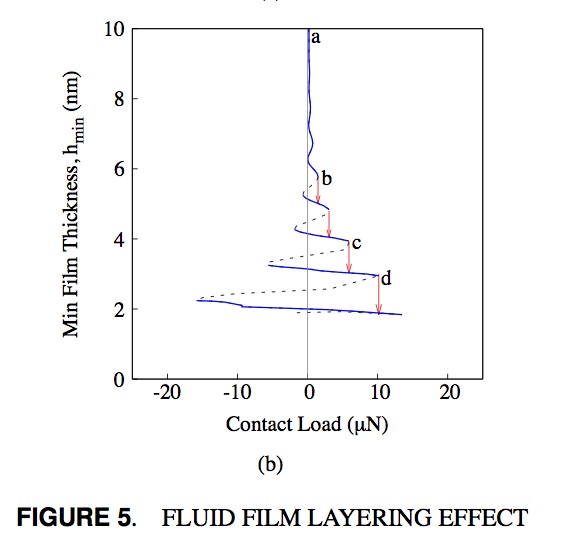RUPTURE AND REFORMATION OF ULTRA-THIN SURFACE FILMS
In lubricated contact conjunctions film ruptures close to the exit boundary. This significantly affects the load carrying ca- pacity and can lead to direct surface interactions. Nano-scale films (several molecular diameters of the lubricant) are no ex- ception, a fact that has been observed using ellipsometry studies for ultra-thin film conjunctions representative for high storage capacity hard disk drives. Immediately beyond the film rupture an area of cavitation occurs and the continuity of flow condition is breached. It has been shown that for molecularly smooth sur- faces solvation effect becomes dominant. This means that the contact exit is subject to discrete drainage of lubricant and may be devoid of a sufficient lubricant for film reformation to occur. This can be a stumbling block in an increasing quest to increase the data storage density of hard disk drives. Wear can become a problem as well as non-uniformity of free surface film at the inlet meniscus. It has been noted that peaks of lubricant can gather in some places, a phenomenon referred to as lubricant mogul. These localized piles of lubricant can exceed the nom- inally aimed for lubricant film thickness necessary for a given data storage level. This paper carries out an in-depth prediction of ultra thin film lubricant behavior through the contact. Hydro- dynamic as well as near surface effects and intermolecular in- teractions responsible for the supply, formation, cavitation and reformation of thin films in the slider-disk conjunction have been considered.
Back to Paper Main Page
Back to list of Conference Proceedings

